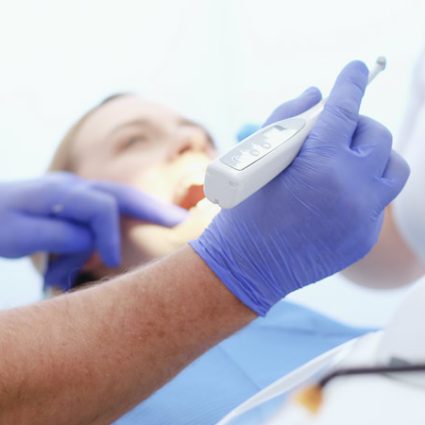Dental Crowns and Bridges
Crowns and bridges are dental procedures that are performed when teeth suffer extensive damage, compromising their structure. A crown fits over the top of a single tooth that has lost most of its surface due to decay, large previous restorations or cracks within the the tooth itself. Bridges are semi-permanent prosthetics used to replace one or more teeth that have lost or removed.
Crowns
Crowns are synthetic caps, usually made of a material like porcelain, placed on the top of a tooth. This procedure is typically used to restore a tooth’s function and appearance following a restorative procedure such as a root canal. When decay in a tooth has become so advanced that large portions of the tooth must be removed, crowns are often used to restore the tooth.
Crowns are also used to attach bridges, cover implants, prevent a cracked tooth from becoming worse, or an existing filling is in jeopardy of becoming loose or dislocated. They also serve an aesthetic use, and are applied when a discolored or stained tooth needs to be restored to its natural appearance.
Bridges
Bridges are natural-looking dental appliances that can replace a section of missing teeth. Because they are custom-made, they are barely noticeable and can restore the natural contour of teeth as well as the proper bite relationship between upper and lower teeth.
Bridges are sometimes referred to as fixed partial dentures, because they are semi-permanent and are bonded to existing teeth or implants. There are several types of fixed dental bridges (cannot be removed), including conventional fixed bridges, cantilever bridges and resin-bonded bridges. Unlike a removable bridge, which you can take out and clean, your dentist can only remove a fixed bridge. Porcelain, gold alloys or combinations of materials are usually used to make bridge appliances.
WHAT TO EXPECT
Procedure and Care

What Happens During a Crown Application?
A tooth must usually be reduced in size to accommodate a crown. A digital scan or impression is then made from the existing tooth to create a custom-designed crown. This scan is sent to a specialized lab, which manufactures a custom-designed crown. A temporary crown is applied until the permanent crown is ready. Permanent crowns are cemented in place.
Crowns are sometimes confused with veneers, but they are quite different. Veneers are typically applied only to relatively small areas.

Caring for Your Crowns
With proper care, a good quality crown could last up to eight years or longer. It is very important to floss in the area of the crown to avoid excess plaque or collection of debris around the restoration.
Certain behaviors such as jaw clenching or bruxism (teeth grinding) significantly shorten the life of a crown. Moreover, eating brittle foods, ice or hard candy can compromise the adhesion of the crown, or even damage the crown.
Family Dental Care
Karls Family Dentistry is happy to provide comprehensive dental services for your family. Contact us today to schedule a cleaning.